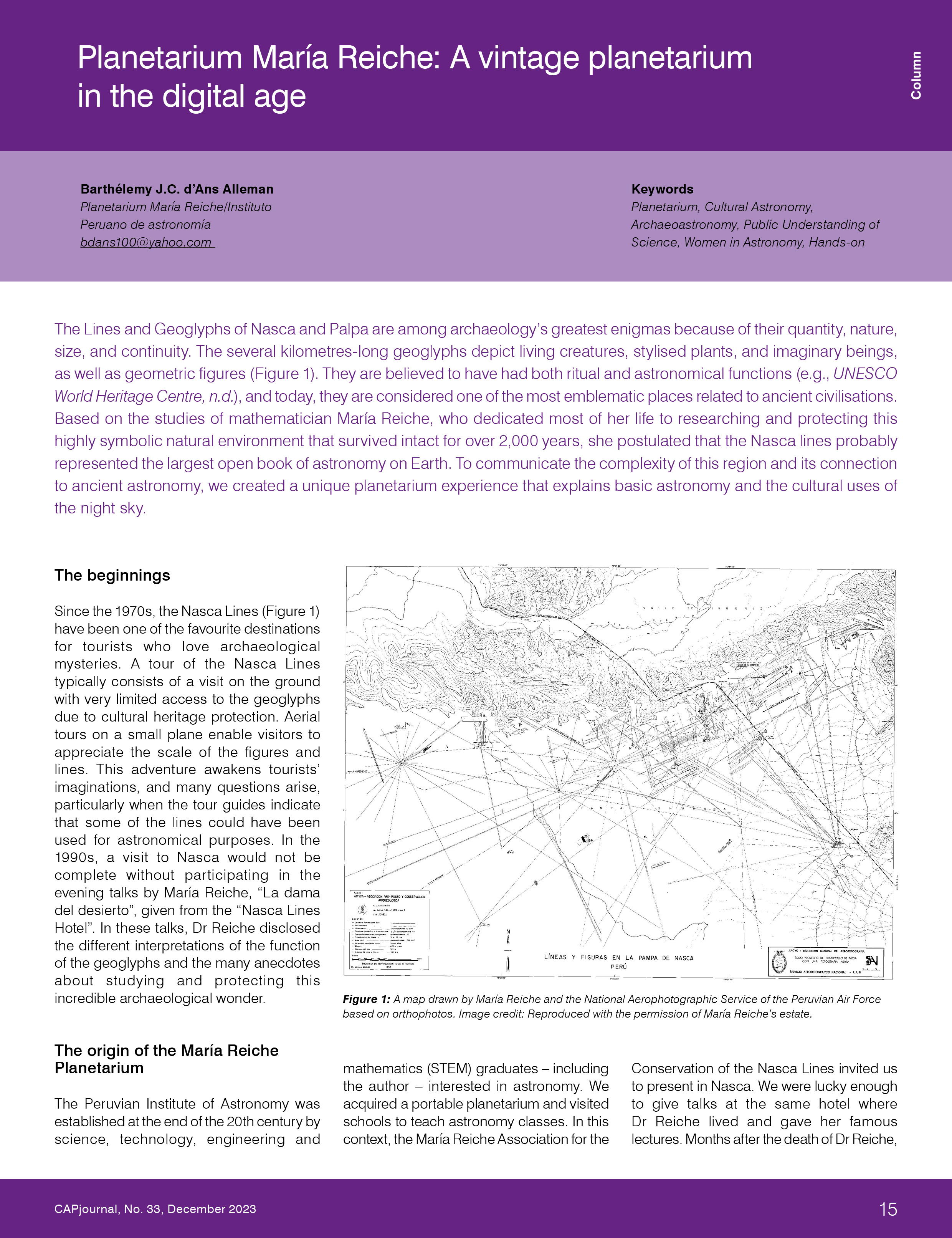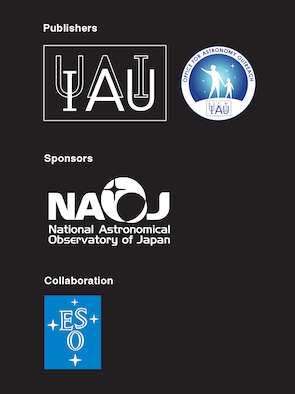|

Download this article
- PDF (1.5 MB)
Back to the Table of Contents
|
Planetarium María Reiche: A vintage planetarium in the digital age (page 15)
d’Ans Alleman, B. J. C.
The Lines and Geoglyphs of Nasca and Palpa are among archaeology's greatest enigmas because of their quantity, nature, size, and continuity. The several kilometres-long geoglyphs depict living creatures, stylised plants, and imaginary beings, as well as geometric figures (Figure 1). They are believed to have had both ritual and astronomical functions (e.g., UNESCO World Heritage Centre, n.d.), and today, they are considered one of the most emblematic places related to ancient civilisations.
Based on the studies of mathematician María Reiche, who dedicated most of her life to researching and protecting this highly symbolic natural environment that survived intact for over 2,000 years, she postulated that the Nasca lines probably represented the largest open book of astronomy on Earth. To communicate the complexity of this region and its connection to ancient astronomy, we created a unique planetarium experience that explains basic astronomy and the cultural uses of the night sky.
Suggested Citation (APA)
d’Ans Alleman, B. J. C. (2024). Planetarium María Reiche: A vintage planetarium in the digital age. Communicating Astronomy with the Public Journal, 34, 15-17. https://www.capjournal.org/issues/34/34_15.pdf
|

